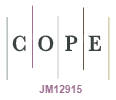Challenges in the use of tests to diagnose tuberculosis infection
NSW Public Health Bulletin 24(2) 93-93 https://doi.org/10.1071/NB13012c
Published: 7 November 2013
The Editors
NSW Public Health Bulletin
Dear Editors
I would like to thank Dr Thompson for his comments regarding limitations of diagnostic tests for latent tuberculosis infection (LTBI). It is true that a universal cut-off level of 10 mm induration to define a positive or negative tuberculin skin test (TST) (and thus the presence or absence of LTBI), as used in the NSW tuberculosis (TB) contact study,1 does not account for individual variations. To establish whether infection is truly present the pre-test probability of a person having LTBI has to be taken into account together with the result of a screening test for LTBI: TST or interferon-gamma release assays (IGRAs). The pre-test probability is based on the exposure to TB depending on the incidence of TB in the country of residence (and in the country of origin, if different) as well as on the TB contact status (no contact, casual or close contact). In interpreting the actual test, the size of the TST reaction and whether a TST conversion occurred will influence the likelihood that true LTBI is present. Potential reasons for a false-positive TST or a false TST conversion, such as recent or multiple BCG vaccination(s), exposure to non-tuberculous mycobacteria and immunological boosting due to a previous TST in a BCG-vaccinated individual, have to be considered. Likewise, potential reasons for a false-negative TST or IGRA, such as conditions associated with anergy and a short time interval since exposure occurred, have to be taken into account when trying to establish whether true LTBI is present. While all those factors warrant consideration in clinical practice, such a highly individualised approach of determining whether true LTBI is present is not feasible when presenting data from a retrospective cohort study with more than 14 000 TB contacts. A TST result of 10 mm has a sensitivity of 90% and specificity of >95%, and is the recommended cut-off point for most clinical situations.2 It is thus reasonable to use this cut-off to define LTBI in a study setting. In the NSW TB contact study all TB contacts were tested with the same tuberculin (5 tuberculin units, 0.1 ml Tubersol®; Sanofi Pasteur).
IGRAs were not routinely used in the examined cohort of TB contacts, but I agree with Thompson that a combination of TST and IGRA can be used not only to confirm a positive TST in a BCG-vaccinated low-risk person, but also to enhance the overall sensitivity in people with a high risk of infection and/or progression to disease. In this context, the tests could be used sequentially (in any order) after an initial test was negative or indeterminate/borderline.
IGRAs are not recommended if repeat testing is planned, for example in health care workers with potentially ongoing TB exposure, as studies on serial IGRA testing have shown high rates of conversions and reversion, independent of exposure or treatment.3,4 Routine dual testing with both TST and IGRA is thus not indicated.
Claudia C. Dobler
Woolcock Institute of Medical Research, University of Sydney and Liverpool Hospital, Sydney
References
[1] Dobler CC. What do we know about the outcomes of tuberculosis contact investigations in NSW? N S W Public Health Bull 2013; 24 34–7.| What do we know about the outcomes of tuberculosis contact investigations in NSW?Crossref | GoogleScholarGoogle Scholar |
[2] Menzies RI. Tuberculin skin testing. In: Reichman LB, Hershfield ES, eds. Tuberculosis: A Comprehensive International Approach. New York: Marcel Dekker; 2000. p. 279–322.
[3] Metcalfe JZ, Cattamanchi A, McCulloch CE, Lew JD, Ha NP, Graviss EA. Test variability of the QuantiFERON-TB gold in-tube assay in clinical practice. Am J Respir Crit Care Med 2013; 187 206–11.
| Test variability of the QuantiFERON-TB gold in-tube assay in clinical practice.Crossref | GoogleScholarGoogle Scholar |
[4] Slater ML, Welland G, Pai M, Parsonnet J, Banaei N. Challenges with QuantiFERON-TB Gold Assay for Large-Scale, Routine Screening of US Healthcare Workers. Am J Respir Crit Care Med 2013; 188 1005–10.
| Challenges with QuantiFERON-TB Gold Assay for Large-Scale, Routine Screening of US Healthcare Workers.Crossref | GoogleScholarGoogle Scholar |


